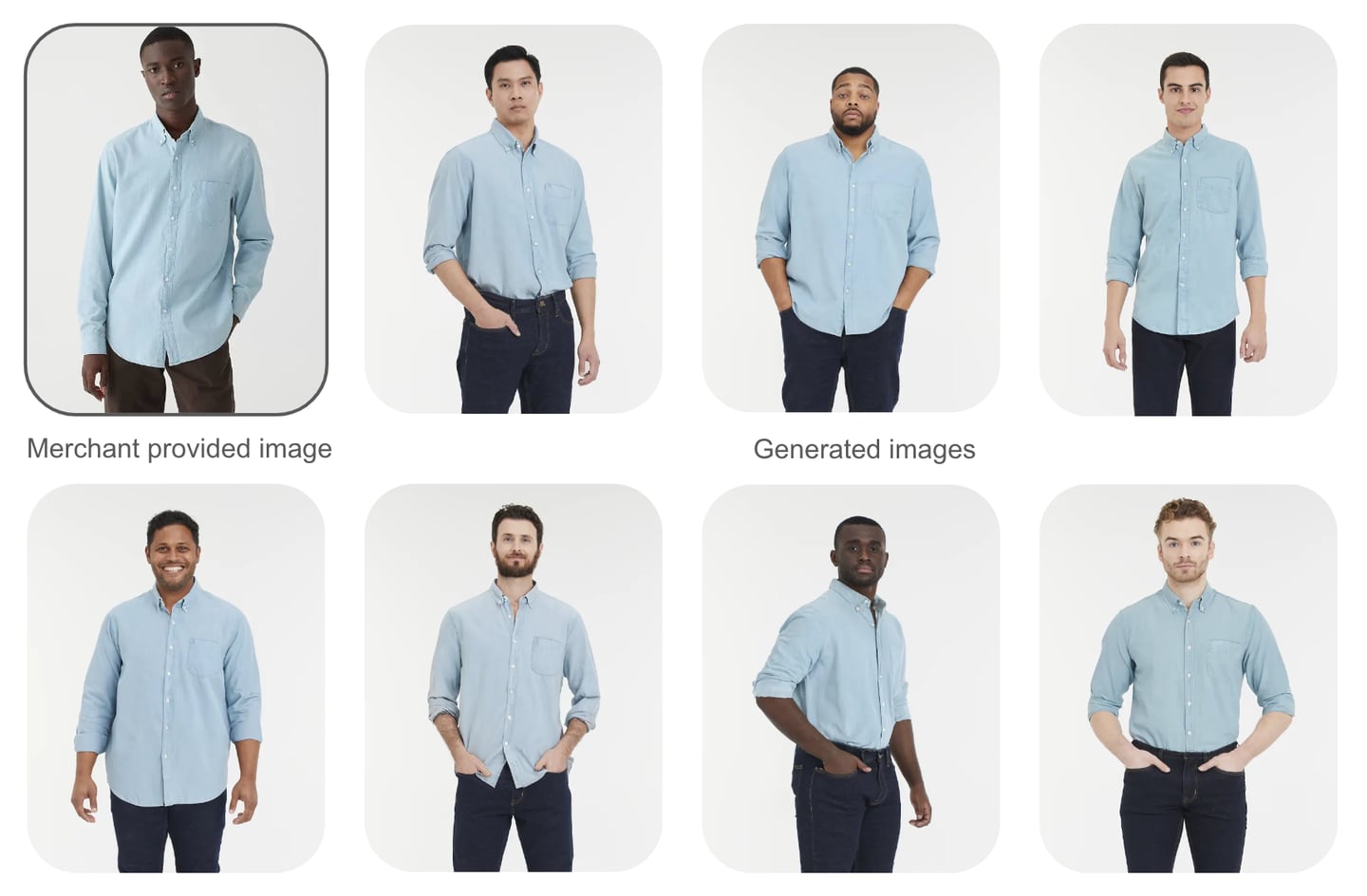
Google is ushering in the holiday shopping season with a spate of new features powered by generative artificial intelligence.
The search and advertising giant on Thursday announced three different tools aimed at helping online shoppers with purchases. One uses AI to suggest gift ideas tailored to the user’s query, in case they’re stumped on what to get a child who wants to be a scientist or an adult who is obsessed with knitting. Another lets users generate photorealistic variations of items they’d like to see — say a metallic puffer jacket or leopard-print hoodie — and then finds the real products in Google’s shopping ecosystem that offer the closest match. Lastly, the company is extending its virtual try-on feature, which uses AI to depict how an item will appear on a range of different models, to men’s tops after introducing the technology on women’s tops in June.
The first two features won’t go live to all users. They’ll only be available to US users through Google’s Search Labs, where it tests new capabilities, as part of the “search generative experience,” or SGE, it unveiled earlier this year, though any US shoppers interested can sign up to get access. Google’s tool for gift ideas will be available to anyone logged into SGE starting today, while the capability to dream up products and search for real versions will debut to US mobile users of SGE in December.
The new expansion of virtual try-on, however, will be accessible to all US mobile users as of today, with desktop soon to follow. Customers will see a “try on” icon next to products from hundreds of brands including J.Crew, Abercrombie & Fitch, Banana Republic and Under Armour. As with its women’s try-on, Google will let users see the product on 40 different models of varying sizes, body shapes and skin tones.
The company, which developed some of the AI techniques underlying a number of popular generative-AI tools, has made shopping one of its key arenas for experimenting with the technology. Lilian Rincon, senior director of consumer shopping at Google, said the women’s virtual try-on has been well received by customers so far and that products offering the feature see 30 percent more of what the company calls “high-quality interactions” than products without it. That means shoppers aren’t just clicking the item and immediately leaving the page but are spending time on the item or potentially making a purchase.
“We think it’s because you have a much greater sense of the product with this,” Rincon said. (She did note that, based on user feedback, Google now shows the models’ heights, which are important for understanding how a top fits.)
The concept of giving users the ability to first generate a product they want and then find real listings to match emerged from Google research that found Gen-Z in particular often had a vision of a specific product in mind but didn’t always know how to search for it, she added. Google’s hope is the feature will let shoppers more easily visualise what they’re looking for, and then it can do the work of sifting through the 35 billion products in its shopping graph to find something similar.
As for letting shoppers ask for gift recommendations, Google also found that many shoppers find gift giving difficult because they don’t know where to start their search.
The company is considering how to roll out features like virtual try-on beyond the US. Rincon pointed out that it isn’t just a matter of opening it up to anyone.
“A market like the US and Canada are very similar in terms of their diversity, but we want to be very thoughtful about this,” she said. “If we were to bring this to Japan, for example, we would need to do a totally new photoshoot, because the models are not representative of that market.”
Still, she emphasised, Google’s plan is to bring the experience to more markets.



